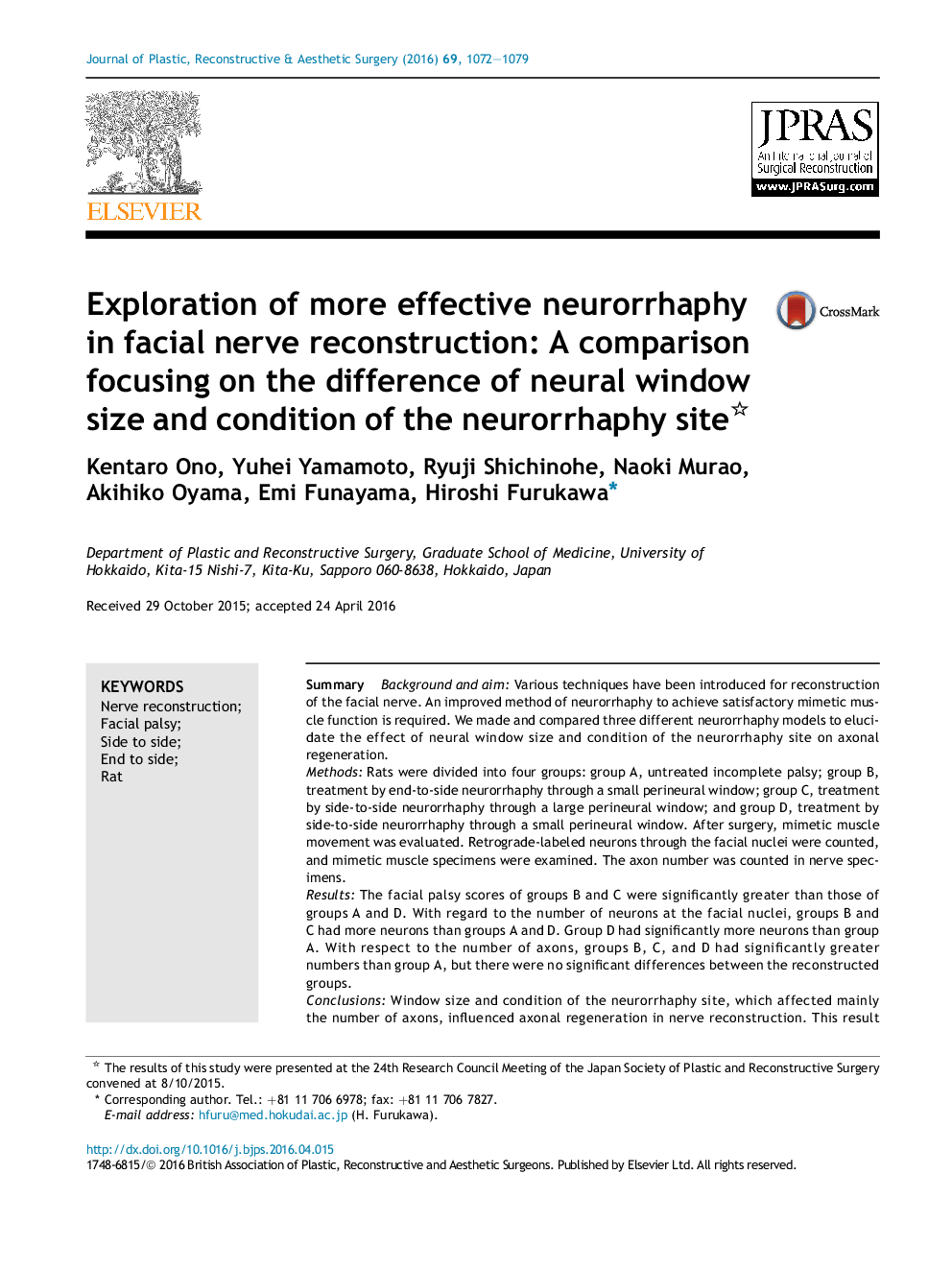| Article ID | Journal | Published Year | Pages | File Type |
|---|---|---|---|---|
| 4117012 | Journal of Plastic, Reconstructive & Aesthetic Surgery | 2016 | 8 Pages |
SummaryBackground and aimVarious techniques have been introduced for reconstruction of the facial nerve. An improved method of neurorrhaphy to achieve satisfactory mimetic muscle function is required. We made and compared three different neurorrhaphy models to elucidate the effect of neural window size and condition of the neurorrhaphy site on axonal regeneration.MethodsRats were divided into four groups: group A, untreated incomplete palsy; group B, treatment by end-to-side neurorrhaphy through a small perineural window; group C, treatment by side-to-side neurorrhaphy through a large perineural window; and group D, treatment by side-to-side neurorrhaphy through a small perineural window. After surgery, mimetic muscle movement was evaluated. Retrograde-labeled neurons through the facial nuclei were counted, and mimetic muscle specimens were examined. The axon number was counted in nerve specimens.ResultsThe facial palsy scores of groups B and C were significantly greater than those of groups A and D. With regard to the number of neurons at the facial nuclei, groups B and C had more neurons than groups A and D. Group D had significantly more neurons than group A. With respect to the number of axons, groups B, C, and D had significantly greater numbers than group A, but there were no significant differences between the reconstructed groups.ConclusionsWindow size and condition of the neurorrhaphy site, which affected mainly the number of axons, influenced axonal regeneration in nerve reconstruction. This result indicates the possibility of obtaining a better result for facial nerve or other peripheral nerve reconstruction with a tidbit of operative artifice.
